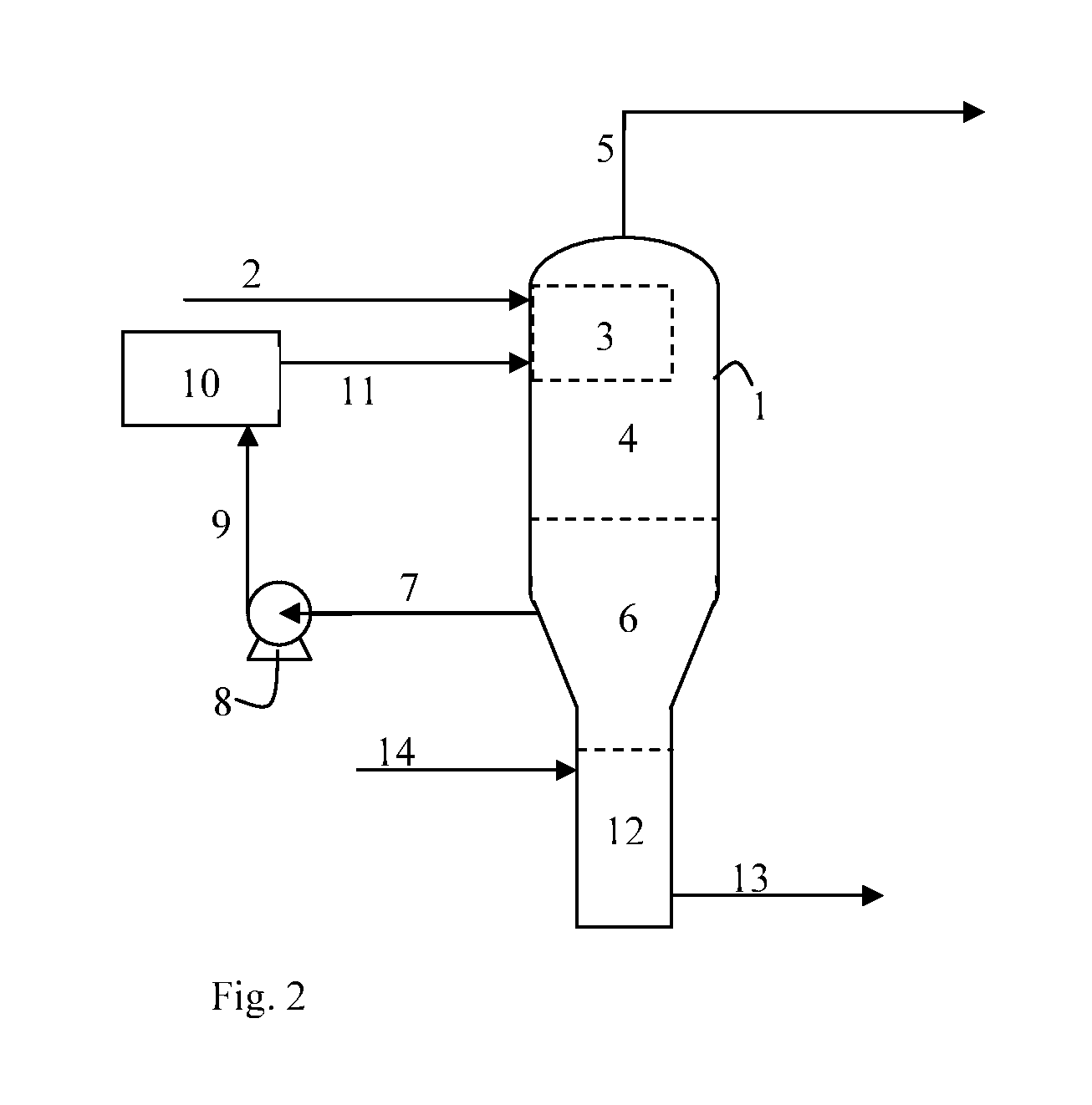Process for separating solids from valuable or harmful liquids by vaporisation
a technology of vaporisation and solids, applied in the field of new materials, can solve the problems of contaminated dissolved and/or suspended solids, unfavorable solid separation effect, and rapid thermal degradation of glycols
- Summary
- Abstract
- Description
- Claims
- Application Information
AI Technical Summary
Benefits of technology
Problems solved by technology
Method used
Image
Examples
example 1
Removal of Salts and Other Solids from Mono-Ethylene Glycol (MEG)
[0064]The following description presents an exemplification of how the method of the invention can be used in gas and oil processing facilities, as an improvement to the methods reported in U.S. Pat. No. 6,685,802 and WO 05 / 102491A1, for removing inorganic contaminants including those listed in Table 1 from aqueous solutions of mono-ethylene glycol (hereinafter termed MEG).
[0065]In this example, the primary component of the recycle fluid is an oil or oil-like liquid which has certain properties including:[0066]substantially non-miscible with water[0067]substantially non-miscible with MEG[0068]thermally stable over the normal operating temperature range of 100 to 180° C.[0069]normal boiling point above 300° C.[0070]low viscosity at operating temperature[0071]low capacity to dissolve the most commonly encountered inorganic non-volatile contaminants of MEG, including chlorides, oxides, bicarbonates and carbonates of sodiu...
example 2
Results for MEG
[0081]Table 2 below presents the results that have been observed experimentally when the process of the invention has been applied to separate dissolved sodium, calcium and chloride contaminants from MEG using two types of recycle fluid, one being a mixture of high MW n-paraffin hydrocarbons manufactured by Nippon Seiro Co Ltd, and the other a commercially available heat transfer oil manufactured by Petro-Canada.
[0082]
TABLE 2Experimental Results with Mono-ethylene GlycolCase 1:Case 2:High MW n-paraffinsHeat Transfer OilMEG content in80%80%feed streamInorganic Ion ContentNa: 33 g / ltrNa: 33 g / ltrin feed streamCa: 11 g / ltrCa: 11 g / ltrCl: 70 g / ltrCl: 70 g / ltrOperating pressure of0.1 bara0.1 baraseparation vesselOperating tempera-145° C.145° C.ture of liquid poolType of solidChloride salts ofChloride salts ofmatter formedsodium and calciumsodium and calciumNo evidence ofNo evidence ofCa-MEG-Cl complexCa-MEG-Cl complexMEG content in Brinein Stripping ZoneMEG content in Wast...
PUM
| Property | Measurement | Unit |
|---|---|---|
| size | aaaaa | aaaaa |
| boiling point | aaaaa | aaaaa |
| boiling point | aaaaa | aaaaa |
Abstract
Description
Claims
Application Information
 Login to View More
Login to View More - R&D
- Intellectual Property
- Life Sciences
- Materials
- Tech Scout
- Unparalleled Data Quality
- Higher Quality Content
- 60% Fewer Hallucinations
Browse by: Latest US Patents, China's latest patents, Technical Efficacy Thesaurus, Application Domain, Technology Topic, Popular Technical Reports.
© 2025 PatSnap. All rights reserved.Legal|Privacy policy|Modern Slavery Act Transparency Statement|Sitemap|About US| Contact US: help@patsnap.com



